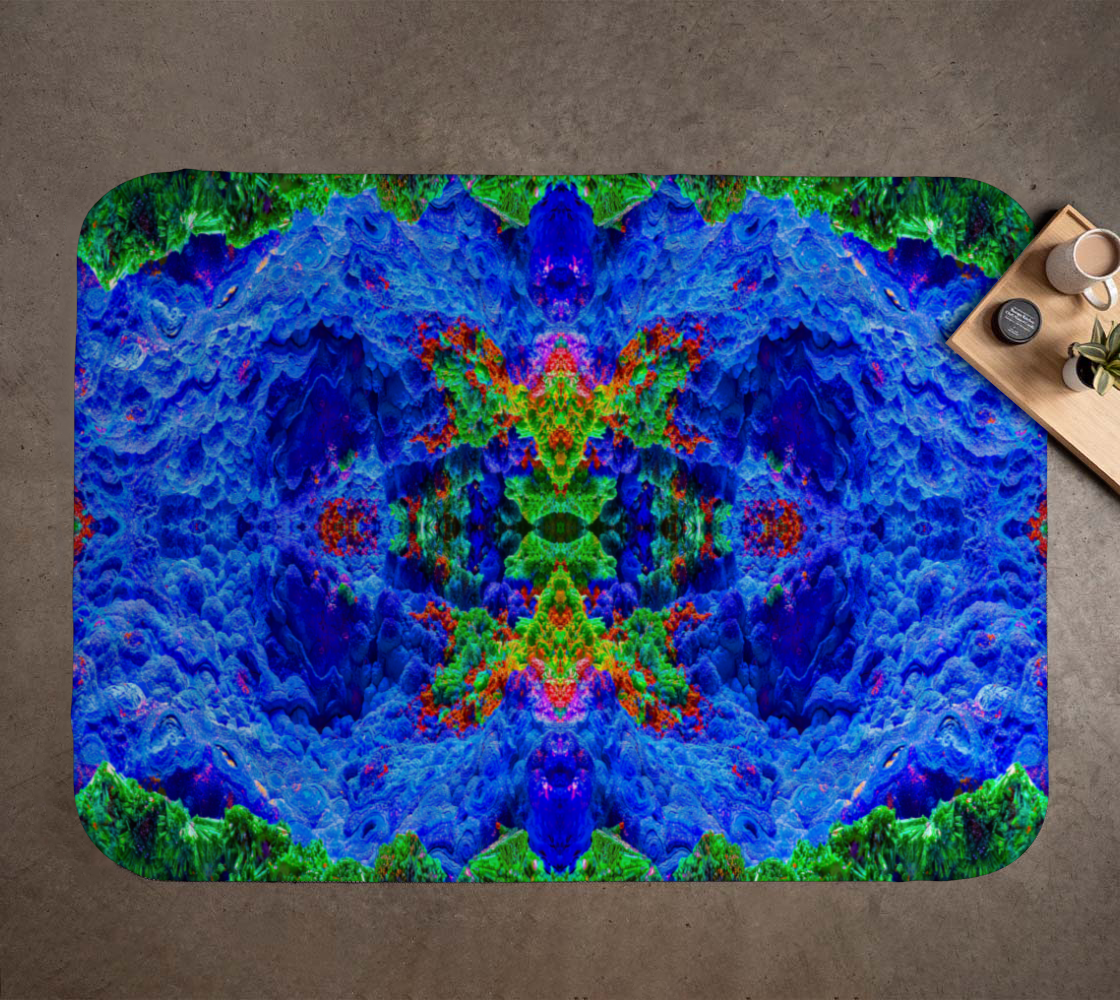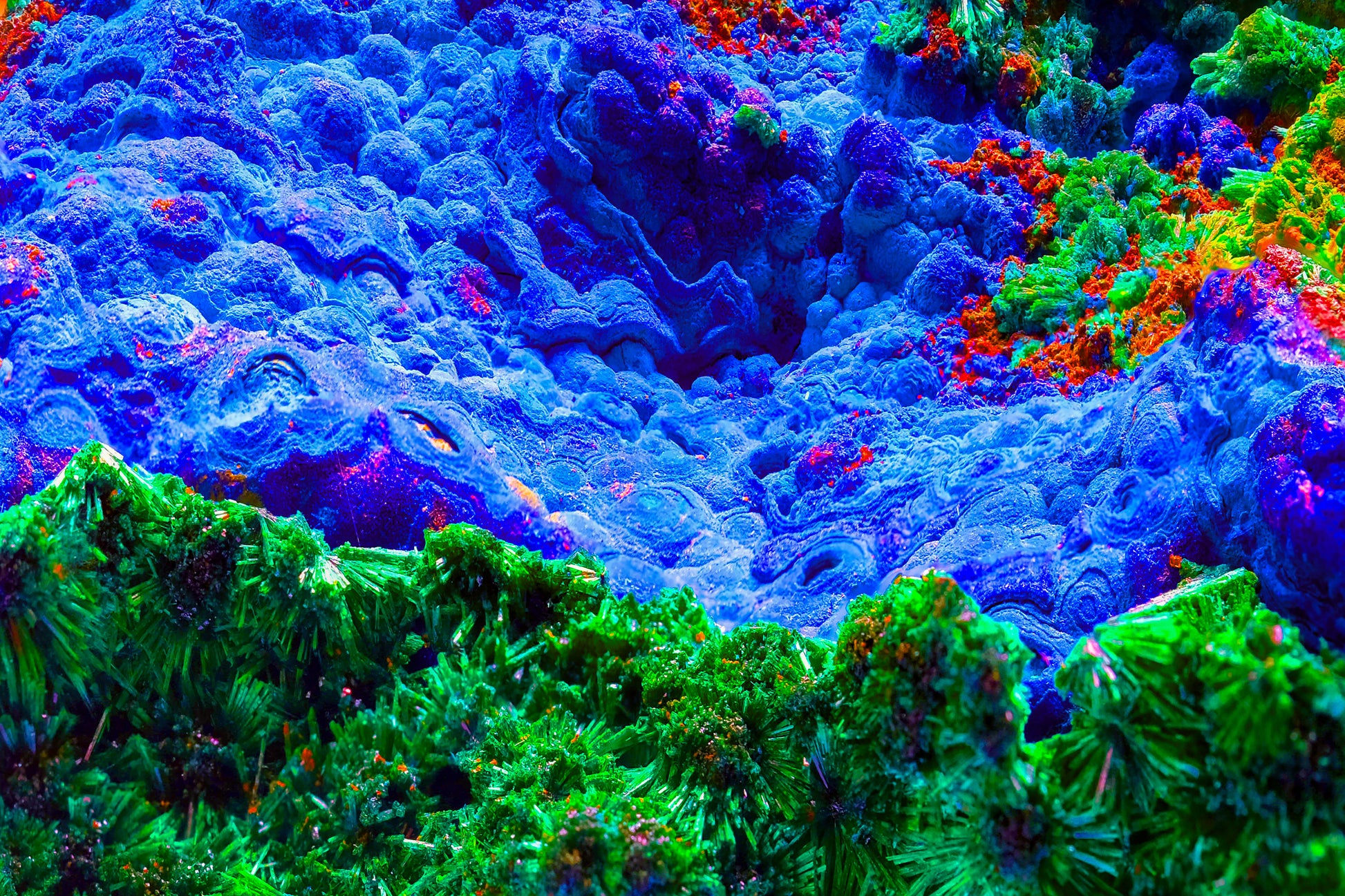My Store
Blanket: Malachite Crystals and Azurite Botryoids and Red Cuprite, Queen Copper Mine, Bisbee, Arizona, Yale, Circa 1900, Original Color
Blanket: Malachite Crystals and Azurite Botryoids and Red Cuprite, Queen Copper Mine, Bisbee, Arizona, Yale, Circa 1900, Original Color
Couldn't load pickup availability
Add some custom printed comfort to your living space with the ultra cosy blanket. Perfect for the bed, the couch and beyond. Featuring:
• Custom printed front side with a neutral grey back
• Rounded edges and a professional blanket stitch finish
• Made from 100% polyester soft and cosy double thick minky fabric
• Digitally printed with vibrant, permanent inks
• Made on demand in Montreal, Canada
`
Malachite Crystals and Azurite Botryoids and Red Cuprite are three copper carbonate minerals that can be found together in some deposits, such as the Queen Copper Mine in Bisbee, Arizona. The collection of Tommy Armstrong contains specimens of these minerals that were originally collected circa 1900 .
Malachite is a green mineral with a chemical composition of Cu2(CO3)(OH)2. It forms at shallow depths in the oxidizing zone above copper deposits, where it precipitates from descending solutions in fractures, caverns, cavities, and porous rock. It often has a botryoidal or stalactitic habit and shows concentric banding or mottling in various shades of green . Rarely occurs in crystals such as this specimen.
Azurite is a blue mineral with a chemical composition of Cu3(CO3)2(OH)2. It also forms in the oxidizing zone of copper deposits, where it can be associated with malachite, chalcopyrite, and other copper minerals. It often occurs as prismatic or tabular crystals, or as spherical aggregates of radiating crystals called botryoids. It has a deep blue color and a vitreous to adamantine luster .
Cuprite is a red mineral with a chemical composition of Cu2O. It forms in the oxidizing zone of copper deposits, where it can be associated with malachite, azurite, copper, and other minerals. It often occurs as octahedral or dodecahedral crystals, or as granular or earthy masses. It has a dark red to brownish-red color and a submetallic to adamantine luster .
Malachite, azurite, and cuprite have some physical properties in common, such as their softness (3.5 to 4 on the Mohs scale), their perfect cleavage in one direction, their high specific gravity (3.6 to 6), and their reaction with dilute hydrochloric acid . They also have some optical properties in common, such as their birefringence and pleochroism .
Malachite, azurite, and cuprite also have some mystical properties attributed to them by various cultures and traditions.
Malachite is considered a stone of transformation, protection, healing, and balance. It is said to enhance intuition, creativity, and empathy, as well as to absorb negative energies and pollutants from the environment .
Azurite is considered a stone of insight, vision, and communication. It is said to stimulate the third eye and throat chakras, enhance mental clarity and memory, and facilitate spiritual guidance and connection
Cuprite is considered a stone of vitality, courage, and passion. It is said to activate the root chakra, increase physical energy and stamina, and stimulate the willpower and manifestation abilities .
The Queen Copper Mine in Bisbee, Arizona is a remarkable locality for these three minerals, as well as many other copper minerals such as chrysocolla, turquoise, and chalcopyrite. The mine was originally discovered by George Warren in 1877 and was acquired by Phelps Dodge in 1885. The mine produced over 8 billion pounds of copper until it closed in 1985. Today, the mine is open for tours for visitors who want to learn more about its history and geology.
Share



